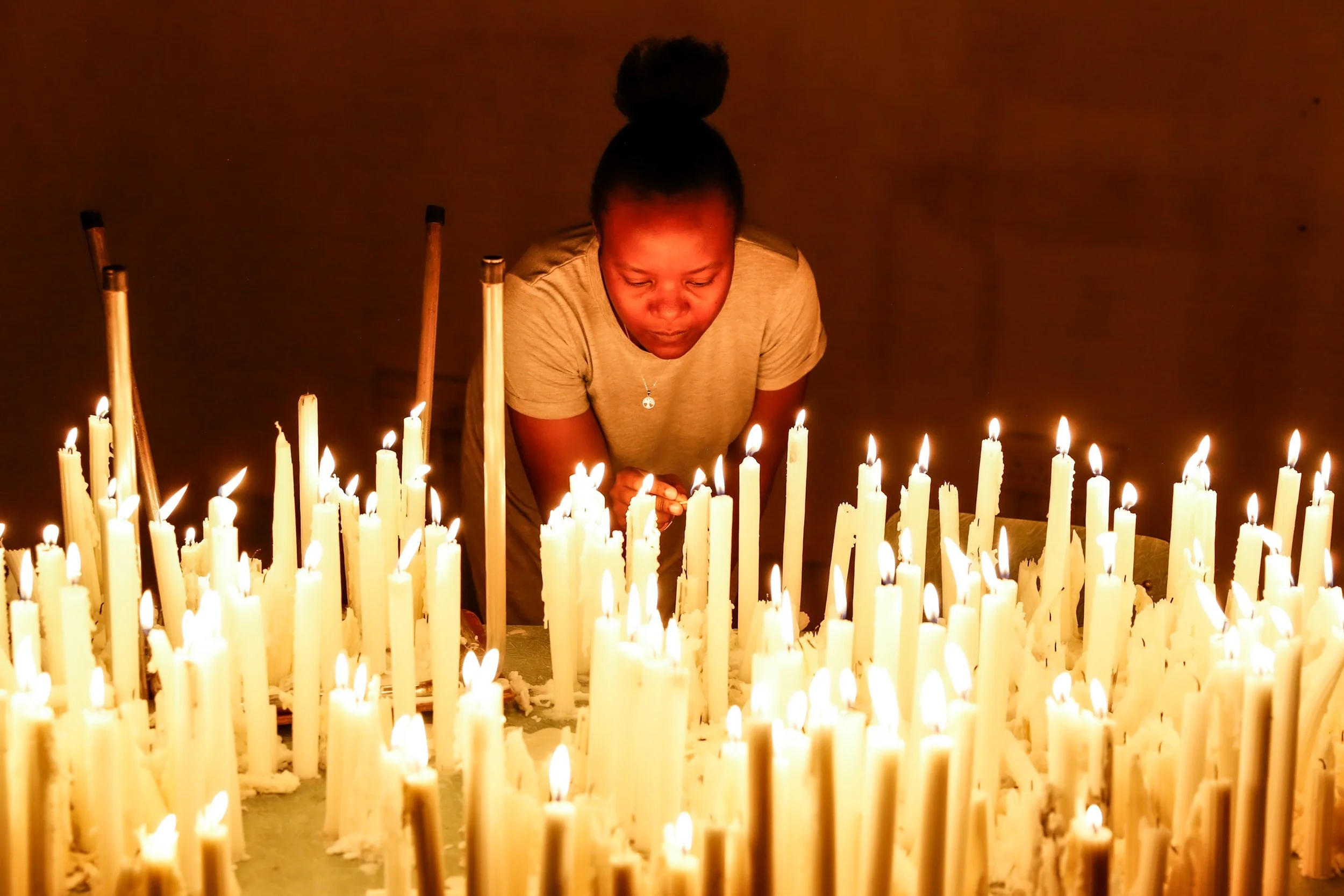GORAA GORENG?
A table, some chairs, and a collection of candles. It is as simple and as elaborate as that. Flames rise, dance and converge. Wax melts, drips and leaks onto the linoleum. Soon enough, the whole table is coated in wax.
The low glow and flicker of candlelight is something of a constant in the performances of Season 9 of The Centre for the Less Good Idea. Is it light and flame as evocation, remembrance, illumination and instruction. Here, as a collective and carefully considered installation, candles merge, melt and proliferate to produce a distinct sense of place.
Goraa goreng? is scenography as installation in response to translation and space. Malaka’s conceptualisation of the space is intentionally nostalgic – an attempt at making sense of the present by invoking the past and activating memory.
There are two outliers. A single chair draped with a blanket remains profoundly untouched by the wax. There is also an upturned chair resting on the tabletop. At odds with the rest of the chairs, which hold a certain presence, the upturned chair suggests absence – a void in the conversation. Together, they form a series of conversations with those who are both present and absent.
Goraa goreng? is uncomplicated in its use of materials, but the thematic throughline is nonetheless a layered and complex one, speaking to the recurring conversations that happen in and around translation – translation as seeking enlightenment and understanding. Loss, yearning, the persistence of memory: "Goraa goreng?" What does it mean? And to what end?
– David Mann
CREDITS:
SCENOGRAPHER | Nthabiseng Malaka
LIGHTING DESIGNER | Barry Strydom
IZANDI ZEMIZILA YETHU | THE SOUNDS OF OUR TRACES
How we do begin to translate and commemorate the lives of those who we have recently lost? The installation Izandi zemizila yethu | The Sounds of Our Traces, merges scenography with looped projection to produce a commemorative and contemplative space.
Plinthes bearing clusters of candles populate the space, while the names of those who’ve passed away over the past two years appear on the walls of the space. A live performance by Duduza Serenade activates the otherwise still and reflective space in a different capacity, producing a carefully-curated soundscape that traverses the stages of loss, mourning, and acceptance by translating life and shifting grief.
What emerges is an audiovisual installation that commemorates through song, breath and ritual, the artists we’ve lost, translating and transcending loss and pain into the power to carry on.
– David Mann
CREDITS:
PERFORMERS | Duduza Serenade
CHOREOGRAPHER FOR BREATH CYCLE | Athena Mazarakis
DIRECTOR | Mandla Mbothwe
AUDIO DESIGNER | Elvis Sibeko
DIGITAL ANIMATOR | Sanjin Muftić
KWIZULU LESITHATHU
Bundles of imphepho hang at various heights throughout the upper level of the 2nd space. The smell is subtle, yet unmistakable and although they remain unlit, they are activated through sound – a rich and layered soundscape of voices, ambience and incidental music.
Kwizulu Lesithathu is an installation that identifies and holds, albeit tentatively, the seemingly separated realities of time and place. The work takes the sonic and thematic activity of Season 9’s workshops – music, voices, auditory ambience and more – and composes a living, interactive soundscape, embedded in the bundled and suspended imphepho. As one traverses the space, listening to each cluster of sound and sentiment, a dialogue emerges between listener and space, or ritual object and spiritual being.
Finally, there is the subtle, but ever-present dialogue between the dry and bristling bundles of imphepho above, and the flames of the candles in the downstairs installation, Goraa goreng? Through the composition and distillation of sonic passages, channelled through the activity of the viewer and the installation itself, messages can be ferried back and forth.
– David Mann
CREDITS:
CONCEPTUALISER & SOUND DESIGNER | Elvis Sibeko
SOUND ENGINEER | Zain Vally
SCENOGRAPHER | Nthabiseng Malaka
LIGHTING DESIGNER | Barry Strydom


